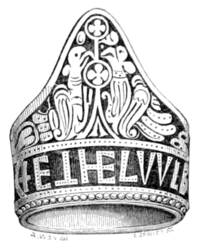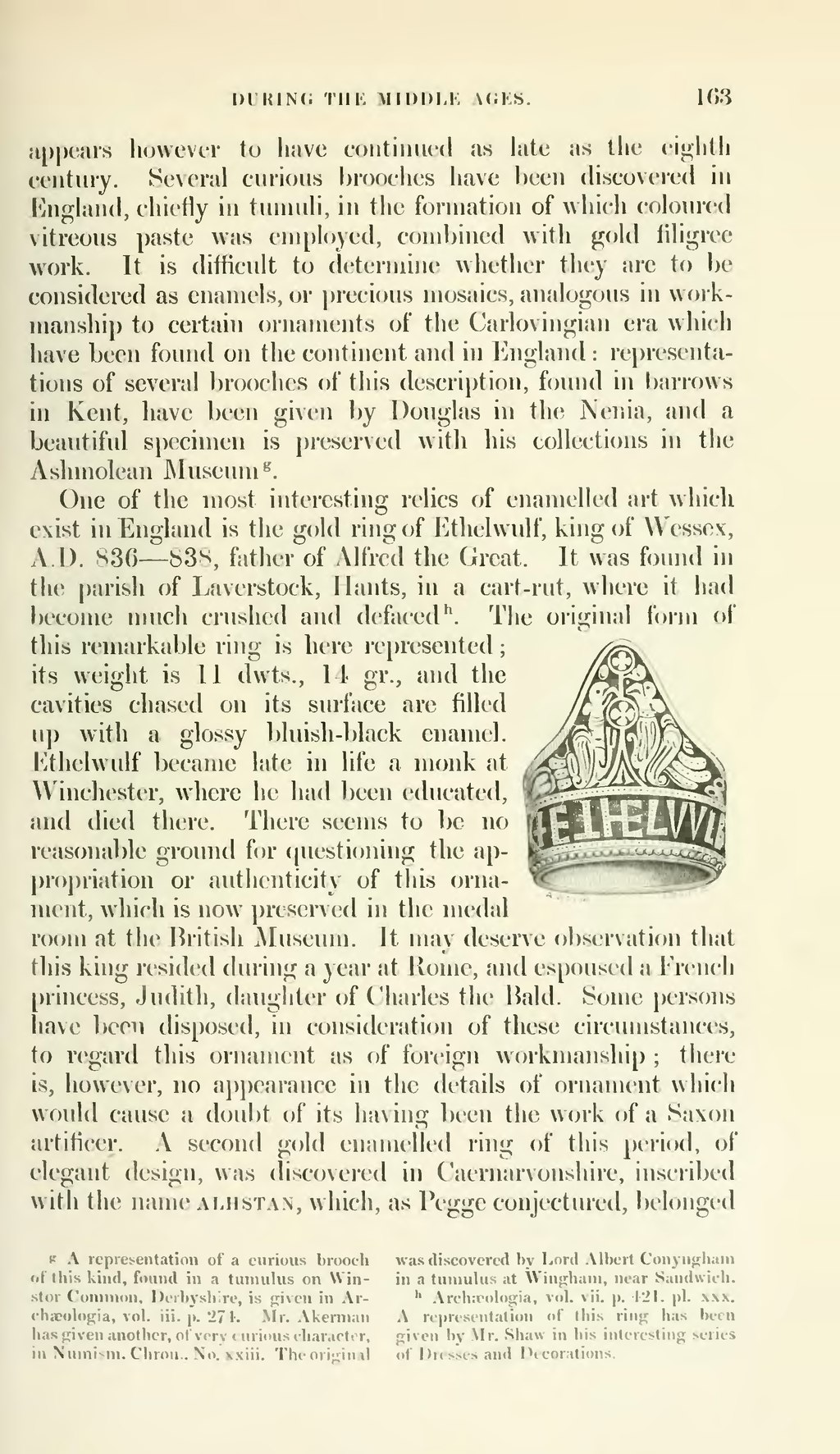appears however to have continued as late as the eighth century. Several curious brooches have been discovered in England, chiefly in tumuli, in the formation of which coloured vitreous paste was employed, combined with gold filigree work. It is difficult to determine whether they are to be considered as enamels, or precious mosaics, analogous in workmanship to certain ornaments of the Carlovingian era which have been found on the continent and in England: representations of several brooches of this description, found in barrows in Kent, have been given by Douglas in the Nenia, and a beautiful specimen is preserved with his collections in the Ashmolean Museum[1].
One of the most interesting relics of enamelled art which exist in England is the gold ring of Ethelwulf, king of Wessex, A.D. 830—838, father of Alfred the Great. It was found in the parish of Laverstock, Hants, in a cart-rut, where it had become much crushed and defaced[2]. The original form of this remarkable ring is here represented; its weight is 11 dwts., 14 gr., and the cavities chased on its surface are filled up with a glossy bluish-black enamel. Ethelwulf became late in life a monk at Winchester, where he had been educated, and died there. There seems to be no reasonable ground for questioning the appropriation or authenticity of this ornament, which is now preserved in the medal room at the British Museum. It may deserve observation that this king resided during a year at Rome, and espoused a French princess, Judith, daughter of Charles the Bald. Some persons have been disposed, in consideration of these circumstances, to regard this ornament as of foreign workmanship; there is, however, no appearance in the details of ornament which would cause a doubt of its having been the work of a Saxon artificer. A second gold enamelled ring of this period, of elegant design, was discovered in Caernarvonshire, inscribed with the name ALHSTAN, which, as Pegge conjectured, belonged
- ↑ Archæologia, vol. vii. p. 421. pl. xxx. A representation of this ring has been given by Mr. Shaw in his interesting series of Dresses and Decorations.
- ↑ A representation of a curious brooch of this kind, found in a tumulus on Winstor Common, Derbyshire, is given in Archæologia, vol. iii. p. 274. Mr. Akerman has given another, of very curious character, in Numism. Chron., No. xxiii. The original was discovered by Lord Albert Conyngham in a tumulus at Wingham, near Sandwich.

